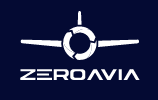Related Research Articles

An electric aircraft is an aircraft powered by electricity. Electric aircraft are seen as a way to reduce the environmental effects of aviation, providing zero emissions and quieter flights. Electricity may be supplied by a variety of methods, the most common being batteries. Most have electric motors driving propellers or turbines.

The e-Genius is a crewed electric airplane, which was developed by the Institute of Aircraft Design at the University of Stuttgart and first flew in May 2011.

The PC-Aero Elektra One is a single seat, electric powered composite aircraft.
The Electric Aircraft Corporation ElectraFlyer-C is an American experimental electric aircraft that was designed by Randall Fishman and produced by his company Electric Aircraft Corporation in 2008. The aircraft is a converted Monnett Moni motor glider intended to test electric propulsion technology for the future Electric Aircraft Corporation ElectraFlyer-X.

The Electric Aircraft Corporation ElectraFlyer-X is an American kit and light-sport electric aircraft, designed by Randall Fishman and at one time under development by his company Electric Aircraft Corporation of Cliffside Park, New Jersey. The ElectraFlyer-X was introduced at AirVenture in 2009. The aircraft is intended to be supplied as a kit for amateur construction or as a complete ready-to-fly aircraft.

The Alisport Silent 2 Electro is an Italian mid-wing, single-seat motor glider, designed and produced by Alisport of Cremella and provided as a complete ready-to-fly aircraft. The aircraft was introduced at the Aero show held in Friedrichshafen in 2011.
The Flylight E-Dragon is a British electric ultralight trike, designed by Ben Ashman and prototyped by Flylight Airsports of Northamptonshire. The aircraft was under development in 2011.

The Airbus E-Fan is a prototype two-seater electric aircraft that was under development by Airbus. It was flown in front of the world press at the Farnborough Airshow in the United Kingdom in July 2014. The target market was intended to be pilot training, but production of the aircraft was cancelled in April 2017.
The Liaoning Ruixiang RX1E is a Chinese two-seat electric aircraft, designed by the Liaoning General Aviation Academy at Shenyang Aerospace University and manufactured by the Liaoning Ruixiang General Aviation Manufacture Company Limited of Shenyang.

The Bye Aerospace eFlyer 2 is a light electric aircraft designed and under development by Bye Aerospace of Denver, Colorado.

The NASA X-57 Maxwell was an experimental aircraft being developed by NASA, intended to demonstrate technology to reduce fuel use, emissions, and noise. The first flight of the X-57 was scheduled to take place in 2023, but the program was cancelled due to problems with the propulsion system.
The Electric Aircraft Corporation ElectraFlyer-ULS is an American electric ultralight motor glider, designed by Randell Fishman and produced by the Electric Aircraft Corporation of Cliffside Park, New Jersey, introduced in late 2012. The aircraft is supplied complete and ready-to-fly.

The Eviation Alice is an electric aircraft designed to accommodate nine passengers and two crew members. First developed in Israel, its construction incorporates 95% composite material, is powered by two electric motors, and has a T-tail. The prototype first flew on 27 September 2022.
The Bye Aerospace eFlyer4, originally named the Bye Aerospace Sun Flyer 4, is an American electric aircraft under development by Bye Aerospace of Denver, Colorado. The design was announced at the 2017 AirVenture airshow in Oshkosh, Wisconsin. The aircraft will be type certified and supplied complete and ready-to-fly.
Bye Aerospace is an American aircraft manufacturer based in unincorporated Arapahoe County, Colorado. The company specializes in the design and manufacture of electric aircraft, including unmanned aircraft for geospatial role and light aircraft for the flight training role. The company was founded by George E. Bye, who remains the CEO.

The Volocopter 2X is a German two-seat, optionally-piloted, multirotor eVTOL aircraft. The personal air vehicle was designed and produced by Volocopter GmbH of Bruchsal, and first introduced at the AERO Friedrichshafen airshow in 2017. The aircraft is sold complete and ready-to-fly. Volocopter was formerly known as E-volo.

The Siemens-FlyEco Magnus eFusion is a German hybrid diesel-electric aircraft that was designed by Siemens and FlyEco, introduced at the AERO Friedrichshafen show in 2018. The aircraft is intended for series production as a ready-to-fly design.
A hybrid electric aircraft is an aircraft with a hybrid electric powertrain. As the energy density of lithium-ion batteries is much lower than aviation fuel, a hybrid electric powertrain may effectively increase flight range compared to pure electric aircraft. By May 2018, there were over 30 hybrid electric aircraft projects, and short-haul hybrid-electric airliners were envisioned from 2032.

The Scylax E10 is a 10-seat all-electric aircraft project by German start-up Scylax Aircraft.

ZeroAvia is a British/American hydrogen-electric aircraft developer. The company was founded in 2017 by Valery Miftakhov, who currently serves as the company CEO. ZeroAvia is developing hydrogen-fueled powertrain technology aiming to compete with conventional engines in propeller aircraft, with an aim of zero-emission and lower noise. ZeroAvia expects to sell products by 2023 and demonstrate flights up to 500 miles (800 km) in aircraft of up to 20 seats. According to the company, by 2026, ZeroAvia intends to fly an aircraft over 500 miles range in aircraft with up to 80 seats.
References
- 1 2 3 4 "Questions for George Bye". aviationweek.com. Retrieved 21 March 2018.
- 1 2 3 "AEAC's Sun Flyer Aims to Be The Next Generation Flight Training Aircraft". aviationpros.com. Retrieved 21 March 2018.
- ↑ "Spartan College Signs Deposit Agreement for First 20 "Sun Flyer" Production Aircraft". aviationpros.com. Retrieved 21 March 2018.